Palatine Hill is an important part of Rome’s history and represents the power of the empire. It is known as the birthplace of Rome and was where Roman emperors lived in luxury and influenced the world. Here, you will visit famous places like the House of Augustus, the official residence of the first emperor, and Domitian’s Palace, a grand palace showcasing Rome’s architectural and political development.
The rich history of Palatine Hill includes myths, historical events, and artistic expressions, all set against stunning views of the Roman Forum and Colosseum. Walking in the footsteps of emperors allows you to enter a realm where legends were created and imperial life unfolded in remarkable fashion.
This exploration also provides a deeper understanding of Ancient Rome, going beyond simple tales of conquest to examine its innovations, culture, and governance that have left an everlasting impression on our planet.
As we continue this journey, it is important to recognize the significance of the Roman Army, a representation of military strength that played a vital role in both expanding and maintaining the Roman Empire. Its organization, tactics, and operational efficiency were crucial in securing victories over vast territories.
Additionally, Roman roads acted as the backbone of this enormous empire, effectively sustaining and broadening its influence.
The importance of Roman engineering cannot be emphasized enough; their methods had a profound effect on future generations, laying down the groundwork for modern infrastructure systems.
Finally, comprehending the shift from monarchy to republicanism is essential for understanding the intricacies of Roman rule and its lasting influence on contemporary political frameworks.
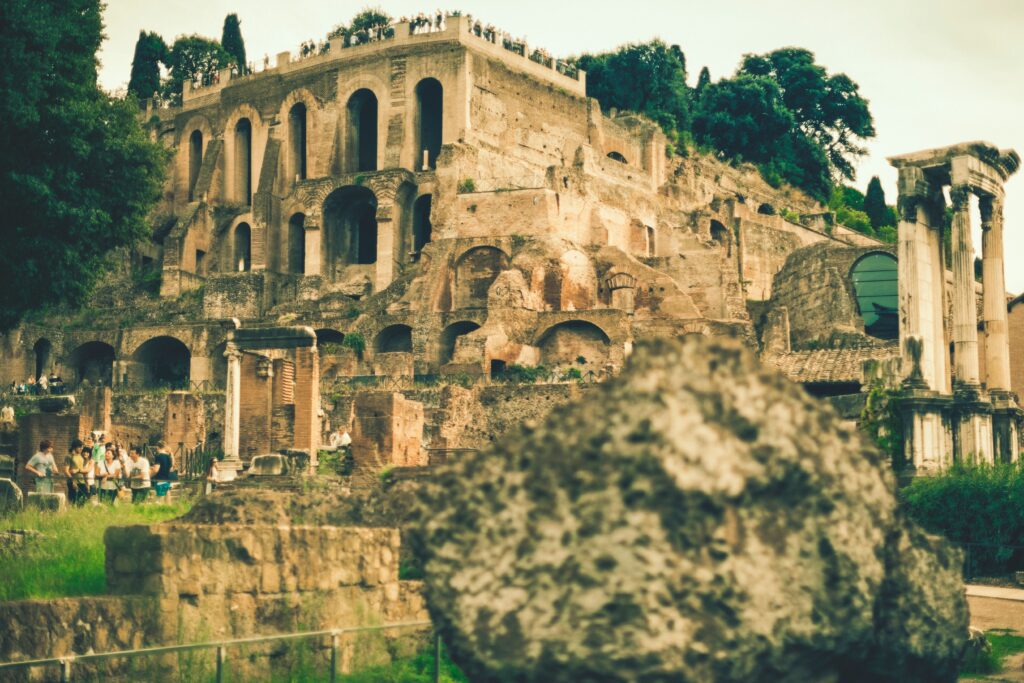
The Origins of Power: Palatine Hill in Ancient Rome
Palatine Hill is where Rome’s story begins. It was home to the first humans who settled in this area, as evidenced by the discovery of simple huts from the Iron Age. These early inhabitants chose this hill for its natural defenses and closeness to the Tiber River.
From Humble Beginnings to Elite Residence
Over time, Palatine Hill transformed from these basic shelters into an upscale neighborhood. This shift reflects Rome’s own growth as a city. As the years went by, members of the rising upper class and political leaders began to flock to Palatine Hill. Its high vantage point became a symbol of wealth and influence, setting the stage for its future role as a hub for emperors.
Mythology and Significance
Palatine Hill holds great importance not only in terms of physical remains but also in Roman mythology. According to legend, it is said that Romulus and Remus, twin brothers and sons of Mars, were raised by a she-wolf in a cave called Lupercal located on this very hill. This myth reinforces Palatine Hill’s status as the birthplace of Rome, with Romulus eventually establishing the city atop this hill after defeating his brother.
Key Points About Palatine’s Early Importance
- Served as an initial nucleus for settlement during the Iron Age.
- Evolved into a preferred area for Rome’s elite well before imperial times.
- Embedded in foundational Roman mythology through Romulus and Remus.
- Home to sacred sites such as the Lupercal cave representing divine protection.
The combination of archaeological findings and legendary stories firmly establishes Palatine Hill as both a physical location and symbolic center of Rome’s beginnings. Its early significance laid the groundwork for later developments when grand residences would emerge to showcase increasing political power and imperial ambitions.
This shift towards grandeur was not just limited to architecture but also extended to entertainment in Ancient Rome, which played a crucial part in society with various activities that fascinated people and had significant effects on social relationships and political authority.
As we delve deeper into understanding Ancient Rome, resources like Men of Pompeii provide valuable insights into this fascinating world spanning from its origins as a Republic to its transformation into a mighty Empire.
The impact of Roman culture, governance, and innovations can be seen in various aspects of modern society, highlighting how deeply rooted their legacy is in Western civilization.
Moreover, exploring daily life in Ancient Rome reveals vast differences for various social classes, especially between patricians and plebeians which further enriches our understanding of this ancient civilization.
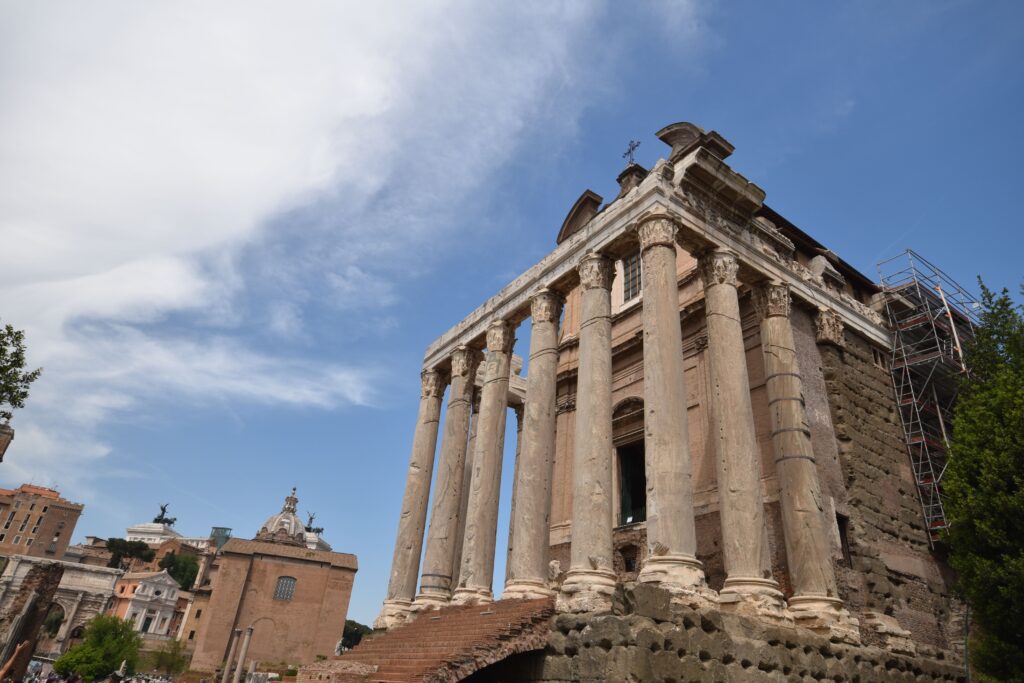
Republican Elegance: The Rise of Elite Residences
The [Republican period](https://www.menofpompeii.com/the-rise-and-fall-of-the-roman-empire) marked a significant transition in the architectural landscape of Palatine Hill. Elite residences from this era showcased a blend of functionality and grandeur, with villas characterized by elegant designs and opulent features that served as symbols of wealth and influence for their owners.
Architectural Styles and Luxurious Features of Republican Villas
One notable example is the [House of Livia](https://www.menofpompeii.com/roman-architecture-masterpieces-of-ancient-engineering), a stunning villa that exemplifies the sophistication of Republican architecture. This residence, attributed to Emperor Augustus’s wife Livia, boasts intricate frescoes, elaborate mosaics, and finely crafted furnishings that reflect the refined taste and social standing of its occupants.
These elite residences not only provided luxurious living spaces but also served as political statements, underscoring the prestige and power of Rome’s ruling class. The architectural styles employed in these villas were meant to impress and awe visitors while reinforcing the authority and influence wielded by their owners.
Social Status and Political Power Reflected in Residences
The design choices made by the architects and owners of these villas were intentional displays of wealth and power. The use of expensive materials, such as marble and precious stones, along with intricate craftsmanship, conveyed a sense of superiority over others.
Furthermore, the location of these residences on Palatine Hill held great significance. As one of the seven hills of Rome, Palatine Hill was associated with royalty and nobility. By building their homes here, the elite sought to establish their dominance within Roman society.
Visitors exploring Palatine Hill today can marvel at the remnants of these Republican-era villas, gaining insights into the lavish lifestyles of Rome’s elite during this period. The House of Livia stands as a testament to the artistic and architectural achievements of the time, offering a glimpse into a bygone era of elegance and sophistication on Palatine Hill.
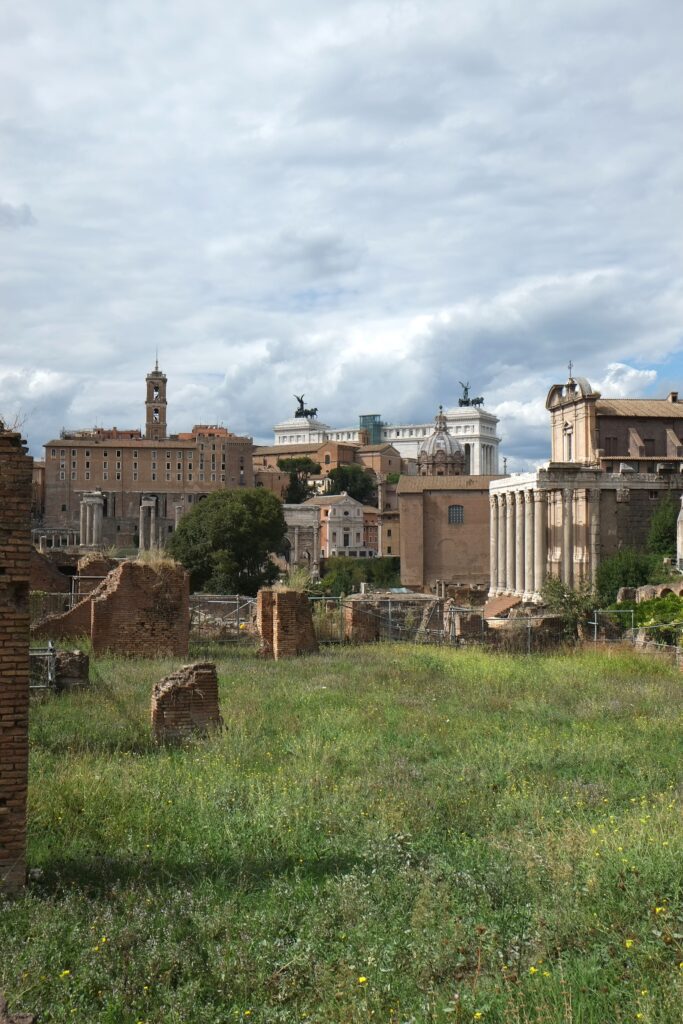
Imperial Grandeur: The Transformation into Palatial Residences
During the imperial times, there was a significant change in the design and size of homes on Palatine Hill. Elite residences transformed into vast palaces that represented the absolute authority of Rome’s emperors. This change is perfectly exemplified by Domitian’s Palace, an architectural wonder that redefined imperial luxury and power.
The Significance of Domitian’s Palace
Constructed in the late 1st century AD, Domitian’s Palace was much larger and more complex than earlier Republican villas. It featured multiple levels connected by grand staircases and offered breathtaking views of the Roman Forum and beyond. The palace served not only as a residence but also as a political statement, symbolizing the emperor’s control over the city and empire.
Opulent Materials and Decorative Schemes
The materials used in these palatial homes were incredibly luxurious:
- Marble veneers adorned walls and floors.
- Polychrome stones created intricate decorative patterns.
- Gold leaf highlighted frescoes and stucco reliefs.
- Lavish mosaics depicted mythological scenes and imperial iconography.
Every corner of these residences showcased elaborate decorations, reflecting both artistic innovation and imperial propaganda. Frescoes and sculptures celebrated the divine lineage of emperors, blending mythology with history to legitimize their rule.
Architectural Innovations
Domitian’s Palace also incorporated advanced architectural techniques such as vaulted ceilings, spacious open courtyards (peristyles), and intricate water features, enhancing both functionality and beauty. This palace set a standard for future imperial residences throughout Rome, marking a new era where architecture became inseparable from imperial ideology.
Exploring Palatine Hill allows us to trace the footsteps of emperors and understand how these grand residences evolved from symbols of personal wealth to powerful representations of Rome’s enduring authority. For those interested in experiencing the grandeur of these historical sites firsthand, a detailed exploration can be found in this photo album which showcases some stunning visuals from an Italian holiday including visits to such historical landmarks. Furthermore, a comprehensive study on the subject can be accessed through this PDF document which provides in-depth information about the architectural evolution during this period.
Excavating History: Notable Archaeological Discoveries on Palatine Hill
The archaeological excavations on Palatine Hill have revealed significant insights into the grandeur of the imperial residences that once stood proudly on this ancient site. Among the notable discoveries are the Flavian Palace complex and the Stadium of Domitian, shedding light on the opulence and architectural prowess of Roman civilization.
The Flavian Palace
The Flavian Palace, also known as the Domus Flavia, was a vast imperial complex constructed during the reign of Emperor Domitian in the late 1st century AD. This sprawling residence boasted impressive architectural features, including courtyards, gardens, and reception halls adorned with intricate mosaics and frescoes. The discovery of the Flavian Palace has provided historians and archaeologists with invaluable information about the lifestyle and cultural preferences of Roman emperors.
The Stadium of Domitian
Another significant find on Palatine Hill is the Stadium of Domitian, an ancient sports arena built by Emperor Domitian for athletic competitions and public events. This elliptical-shaped stadium once accommodated thousands of spectators who gathered to witness chariot races, athletic contests, and other forms of entertainment. The excavation of this stadium has deepened our understanding of Roman leisure activities and social gatherings during the imperial era.
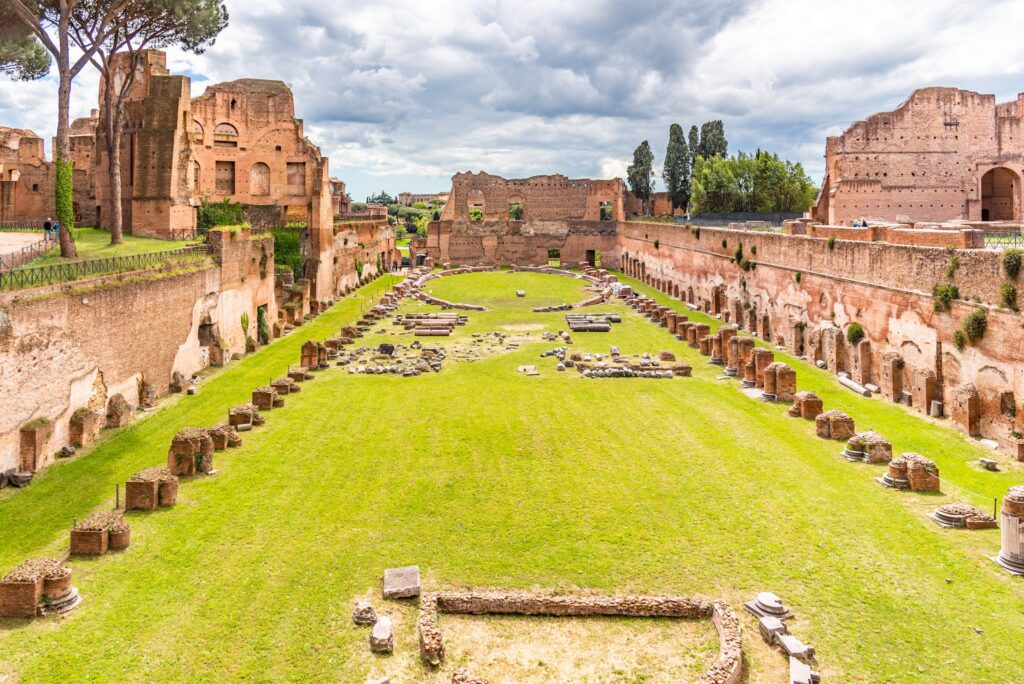
These archaeological discoveries not only showcase the architectural splendor of Palatine Hill’s past but also offer insights into Roman urban planning and design principles. By studying these ancient ruins and artifacts, researchers continue to unravel the mysteries of Rome’s illustrious history and its enduring influence on Western civilization.
In addition to these architectural marvels, it’s essential to consider how the Twelve Tables shaped Roman legal systems during this period. Created between 451-450 BCE, these laws were a significant milestone in the development of Roman law.
Moreover, understanding the structure of power during the Roman Republic can provide further context to these discoveries. This period marked a significant transition in governance from monarchy to a complex political structure that laid the foundation for modern democracies.
The influence of Roman law extends beyond its historical context; it remains the foundation of modern legal systems. This legacy is crucial for grasping contemporary legal frameworks.
Additionally, it’s interesting to note how Stoicism, a philosophical school founded in ancient Greece, became popular in Roman culture during this time. Its principles have influenced important thinkers throughout the empire.
Lastly, we should acknowledge the significance of the Corpus Juris Civilis, a comprehensive codification commissioned by Emperor Justinian I in the 6th century AD. Its creation marked a crucial turning point in the development of legal systems, especially in Europe.
A Symbolic Landscape: Palatine Hill’s Role in Rome’s Identity
Palatine Hill is more than just a physical place; it represents the power and influence of ancient Rome. This elevated area not only provided a strategic advantage for defense but also served as a symbol of authority and wealth for emperors and nobility. From the hill, one can see important landmarks like the Colosseum and Roman Forum, further emphasizing its significance in shaping Rome’s identity.
The Connection Between Palatine Hill and Iconic Structures
The proximity of Palatine Hill to these significant sites highlights its importance in Rome’s cultural and political narrative. The grand palaces built on the hill, overlooking the Colosseum and Roman Forum, showcase the city’s rich history and imperial dominance. This deliberate positioning of opulent residences near public spectacles symbolizes the relationship between political power and entertainment, demonstrating Rome’s influence on a global scale.
Walking Through History on Palatine Hill
When visitors explore the ruins of Palatine Hill today, they are not just looking at old buildings; they are walking through layers of history that have shaped Rome. The interaction between imperial homes and famous monuments evokes a sense of wonder and respect, prompting reflection on how this symbolic landscape has contributed to Rome’s lasting legacy.
This exploration into the ancient Roman religion reveals how deeply intertwined religious practices were with every aspect of Roman life, including politics and social structures. Additionally, understanding the role of agriculture in Roman economic growth provides insight into how this sector was crucial for Rome’s economic development during its Republic and Empire phases.
Furthermore, figures such as Scipio Africanus played pivotal roles in shaping history, particularly during events like the Second Punic War which established Rome’s dominance over Carthage (How Scipio Africanus Changed the Course of History). Finally, examining the legal status of women in ancient Rome unveils a complex interplay of rights and restrictions that significantly influenced gender dynamics in society.
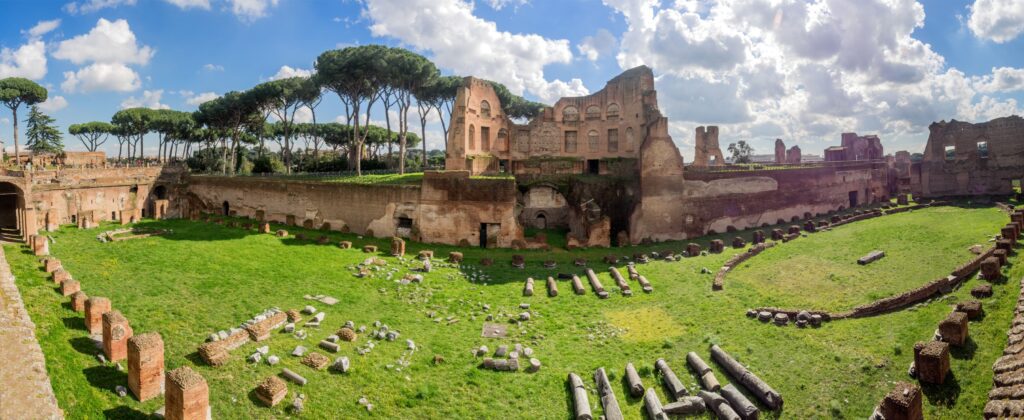
Visiting Palatine Hill Today: A Journey Through Time
Exploring Palatine Hill today offers a unique opportunity for modern exploration where you can walk in the footsteps of emperors and witness the grandeur of Rome’s palatial residences firsthand. The site presents a blend of ancient ruins, lush gardens, and panoramic views that bring history vividly to life.
Tips for your visit:
- Plan ahead: Purchase tickets online to avoid long queues, especially during peak tourist seasons.
- Guided tours: Opt for guided tours or audio guides available at the entrance. These provide detailed narratives on key locations such as the House of Augustus, Domitian’s Palace, and the Flavian Palace complex.
- Wear comfortable shoes: The terrain is uneven with many steps and cobblestones. Prepare for moderate walking through expansive archaeological areas.
- Visit early or late: Early morning or late afternoon visits offer cooler temperatures and softer lighting, enhancing your experience while avoiding crowds.
- Explore gardens: Don’t miss the Farnese Gardens atop the hill, a Renaissance addition offering peaceful greenery and striking city views.
When tracing the footsteps of emperors: Palatine Hill’s palatial residences explored, you gain not only insight into imperial Rome but also a deeper connection to its mythic origins and architectural achievements. This journey through time remains one of Rome’s most captivating historical experiences.
Moreover, this exploration is not just about understanding the architectural marvels but also about appreciating the art and culture in ancient Rome, which is a testament to the ingenuity and creativity of a civilization that thrived from 753 BC to 476 AD. This period is marked by remarkable artistic expressions that were heavily influenced by earlier Greek and Etruscan traditions.
Additionally, it’s essential to understand the role of the patricians in ancient Rome. They were the wealthy and powerful elite, distinct from the working-class plebeians, usually rich landowners who had a significant influence on Roman society.

